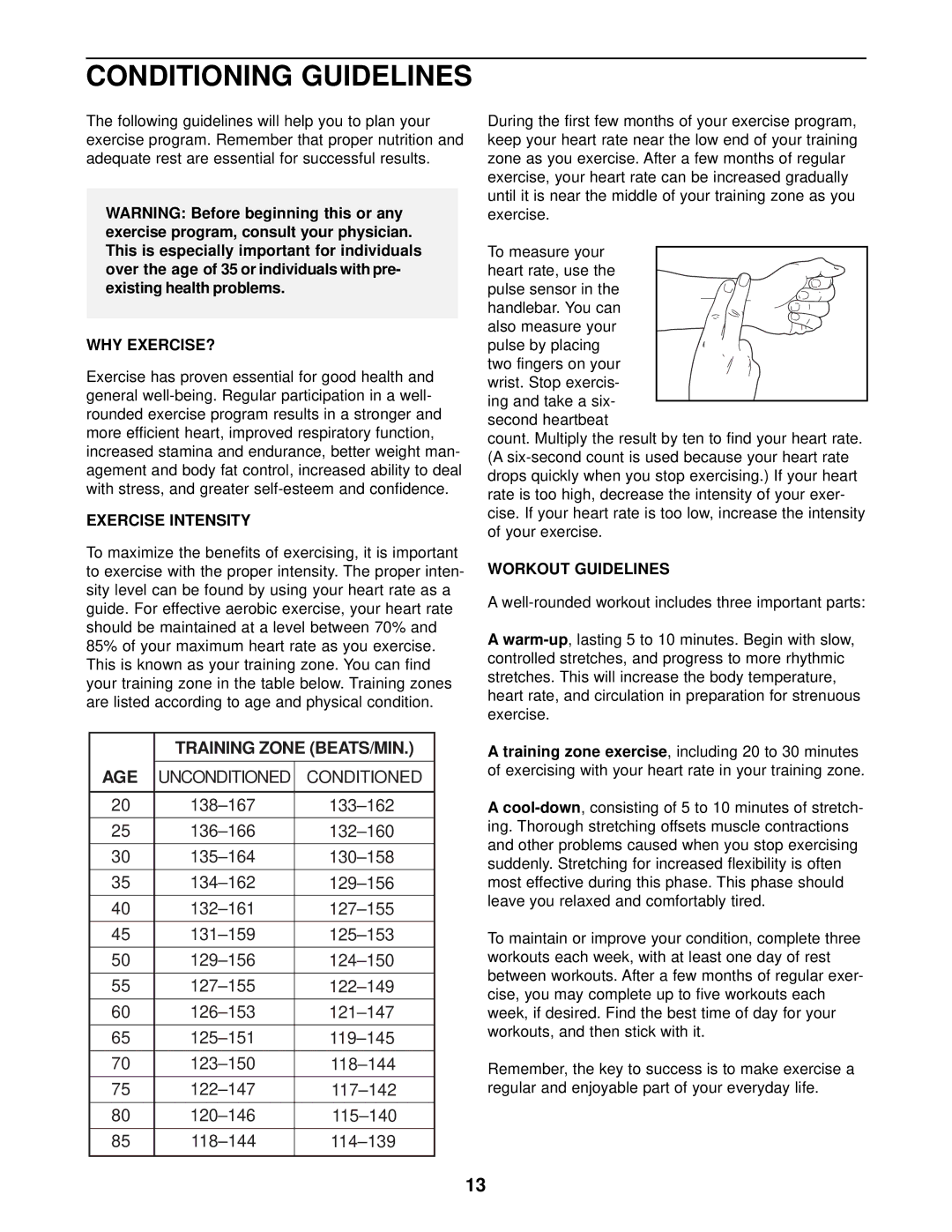
CONDITIONING GUIDELINES
The following guidelines will help you to plan your exercise program. Remember that proper nutrition and adequate rest are essential for successful results.
WARNING: Before beginning this or any exercise program, consult your physician. This is especially important for individuals over the age of 35 or individuals withpre- existing health problems.
WHY EXERCISE?
Exercise has proven essential for good health and general
EXERCISE INTENSITY
To maximize the benefits of exercising, it is important to exercise with the proper intensity. The proper inten- sity level can be found by using your heart rate as a guide. For effective aerobic exercise, your heart rate should be maintained at a level between 70% and 85% of your maximum heart rate as you exercise. This is known as your training zone. You can find your training zone in the table below. Training zones are listed according to age and physical condition.
| TRAINING ZONE (BEATS/MIN.) | |
AGE |
|
|
UNCONDITIONED | CONDITIONED | |
|
|
|
20 | ||
|
|
|
25 | ||
|
|
|
30 | ||
|
|
|
35 | ||
|
|
|
40 | ||
|
|
|
45 | ||
|
|
|
50 | ||
|
|
|
55 | ||
|
|
|
60 | ||
|
|
|
65 | ||
|
|
|
70 | ||
|
|
|
75 | ||
|
|
|
80 | ||
|
|
|
85 | ||
|
|
|
During the first few months of your exercise program, keep your heart rate near the low end of your training zone as you exercise. After a few months of regular exercise, your heart rate can be increased gradually until it is near the middle of your training zone as you exercise.
To measure your heart rate, use the pulse sensor in the handlebar. You can also measure your pulse by placing two fingers on your wrist. Stop exercis- ing and take a six- second heartbeat
count. Multiply the result by ten to find your heart rate. (A
WORKOUT GUIDELINES
A
A
A training zone exercise, including 20 to 30 minutes of exercising with your heart rate in your training zone.
A
To maintain or improve your condition, complete three workouts each week, with at least one day of rest between workouts. After a few months of regular exer- cise, you may complete up to five workouts each week, if desired. Find the best time of day for your workouts, and then stick with it.
Remember, the key to success is to make exercise a regular and enjoyable part of your everyday life.
13
